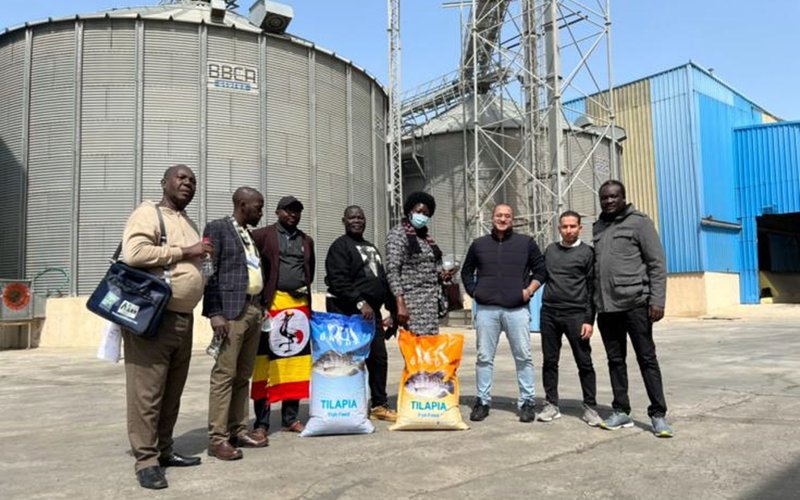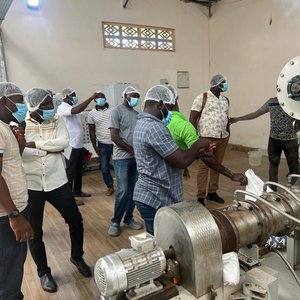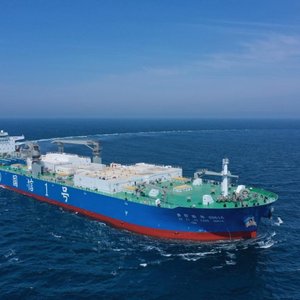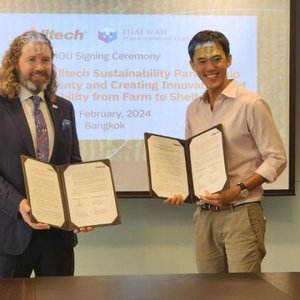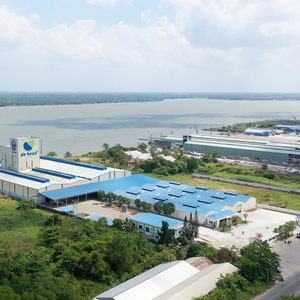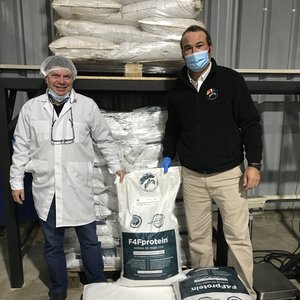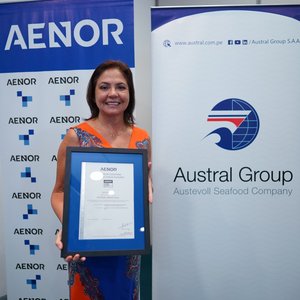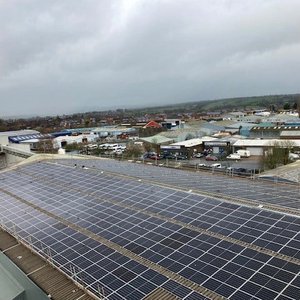Africa has been seeking to increase aquaculture production as a means of dealing with several negative effects associated with low national fish output, including high fish import bills and protein deficiency among an increasing population. However, it has also realized that without the provision of effective fish feed, it will not get very far. Some efforts are now being made in this direction, despite significant challenges. The sad irony though is that as it takes steps to produce more fish feed, it is unable to stop the production of fishmeal for the aquaculture industries in Asia and Europe. Indeed, fishmeal production is a major activity in many African countries, more than the four “known” West African nations.
High fish consumption, high fish imports
Per capita fish consumption in West Africa ranks among and even exceeds global levels. It is 35 kg in Gabon, 25.9 kg in the Ivory Coast, 25 kg in Ghana, and 19 kg in Cameroon. In fish-rich Mauritania, which produces 750,000 MT of fish annually, it is less than 19%, due to the traditional preference of Mauritanians for red meat.
Africa imports more fish than it produces. In 2021, Liberia produced 25,444 metric tons of fish and imported 55,000 tons. Ghana produced 400,000 tons and imported over 600,000 tons, Nigeria produced 1.2 million MT and imported 2.4 million MT. Cameroon produced 300,130 MT, but the annual demand was 450,000 MT. Gabon produced 29,000 MT, and imported 50,000 MT.
Kenya’s fish imports from China grew by a record 25% to Sh 2 billion (USD 12 million) in 2021, representing an increase from the previous 70% in China’s share of Kenyan fish imports to 83%. Meanwhile, on August 1, 2022, while launching the ambitious PSTACI program aimed at producing 550,000 metric tons output by 2027, former Ivorian Premier Patrick Achi complained about the massive CFA 300 billion (USD 456 million) that the nation spent on fish imports every year.
The need to produce more fish: Tackling the feed challenge
Some efforts are being made across Africa to improve fish production by increasing aquaculture production, but the supply of feed has been a challenge. Governments have been promoting the establishment of local feed factories, and there has been some improvement.
In January 2023, De Heus Animal Nutrition opened a feed processing factory in Ivory Coast’s Atinguie Industrial Zone to serve the aquaculture and poultry sector. Prior to De Heus' entry, the Ivory Coast was absorbing close to 30% of the output of Ghana’s Raanan Fish Feed factory.
De Heus branch, Koudijs, started operating in Ghana in 2019. Raanan products have been trickling into Liberia and beyond, and the entry of De Heus into the Ivory Coast should help the promising Liberian industry which has been gearing up to start its own feed industry. De Heus is also on the ground in Ethiopia, and broke ground recently for the construction of a factory at Njeru in Uganda.
In Kenya, the government is seeking to raise annual aquaculture production from the current 20,000 tons to 100,000 tons in the medium term, and 400,000 tons by 2030. Some recent fish feed initiatives are being taken to make that possible. Tunga Nutrition, a collaboration between Skretting and the Unga group, launched their processing plant in 2021, with an initial annual capacity of 25,000 tons.
Also in Kenya, a partnership between Victory Farms, Maxim Agri Holding and Gatsby Africa has resulted in the Samakgro Fish Feed factory, located in Naivasho. According to an official statement, the factory is currently offering Samakgro starter, grower and finisher diets, and will also “invest in local ingredient trials and development, testing for the right mix of nutritional elements’ from locally-produced ingredients”. In Kenya, the first phase of the Liwatoni Fish Processing Complex is expected to be completed by the end of this month, with an initial capacity to process 1,000 tonnes of tuna. Production will be extended by June 2024. Byproducts from the plant will be processed into aquafeeds and fertilizers.
Kenya started an Omena (anchovy) export program to China in July 2023 with an initial shipment of 52 tons. While this has been hailed by many as a promising development, others have raised doubts about the prudence of such a move, considering Kenya’s wide supply gap, and the fact that China supplies a large volume of the fish consumed by Kenyans.
Egypt’s Aqua Group appears to be staking a claim for recognition as the continent’s most dynamic feed company. It is recognizable in the East African market where, in addition to its wide coverage, it is also a management partner with Geddo Fish Farms. It is also taking a close look at the West Africa market with Ghana and The Ivory Coast as initial target locations.
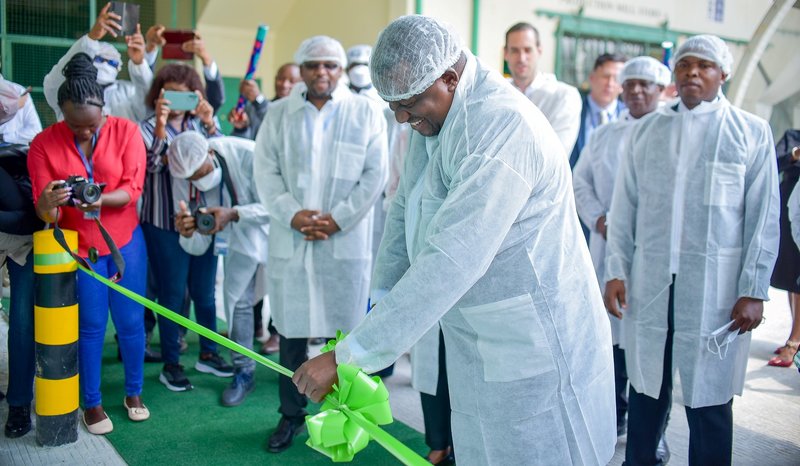
Salim Mvurya, Blue Economy and Fisheries Cabinet Secretary, cutting the tape at the opening of the new Tunga Nutrition processing plant. Credits: Efua Konyim Okai
Feed prices and accessibility
While the introduction and spread of new commercial feed is good for the African aquaculture industry, the question is how accessible these products are to the small farmers who make up the vast majority of African fish farmers. Small farmers find commercial feed prices unaffordable and use farm compounded or low-quality commercial feed. Indeed, agencies that have been providing training and other support services for farmers now include sessions on the use of feed ingredients to enable farmers to improve on the quality of on-farm feed. For example, as part of its 3-year Tilapia Seed Project which ended last year aimed at giving farmers access to good quality seed, WorldFish provided lessons on various ingredients and methods of production.
Fishmeal: An African controversy
Despite international concern, West Africa is recognized as a major source of fishmeal due to the presence of around 50 processing plants in Mauritania, Gambia, Guinea Bissau and Senegal, producing significant amounts of small pelagic fish, including sardines (Sardina pilchardus), anchovies (Engraulis encrasicolus), mackerel (Scomber colias), horse mackerel (Trachurus trecae and T. trachurus), and ethmalose, also known as bonga (Ethmalosa Fimbriata).
A single factory processes over 7,500 metric tonnes of fish per year, deploying 5 kilos of fish to produce 1 kilo of fishmeal. These fish are important as sources of protein for locals and a major source of employment for women involved in processing and marketing. The factories process and export the fishmeal mostly to China. Although the output of West Africa may appear to be low compared to Peru and Vietnam, it is significant when one considers the fact that while global demand for aquaculture, pig farming and pet food is increasing, the leading producers are not registering high output figures.
In June 2023, Peru canceled the first anchovy fishing season. Earlier in February, the 2022 second anchovy season was closed without reaching the planned catch. Peru produces 20% of the global supply of fishmeal, and this development is certain to impact the demand from West Africa.
Interestingly, while the focus is on the four above-mentioned West African nations, there is also a production of fishmeal across Africa for export by Morocco, South Africa, Angola, Namibia, Seychelles and Mauritius. Index Mundi estimates 2023 production figures for Morocco, South Africa and Senegal at 175,000, 230,000 and 13 metric tonnes, respectively. Although West Africa imports a substantial amount of herring, mackerel and horse mackerel, small livestock farmers use a significant amount of small pelagic fish as feed when seasonal catches rise appreciably.
In Nigeria, marine expert Dr. Abba Abdallah has advised the government to take advantage of the “large opportunity to harvest fish for the production of fishmeal for animal feed. The stocks of fish in deep water offshore include the drift fish Ariomma spp. and the mesopelagic lantern fish which occur in enormous quantities in the Gulf of Guinea”. According to Dr. Abdallah, former president of the Fisheries Society of Nigeria, these stocks could provide “a maximum sustainable yield of 2,000,000 tones per year, producing 400,000 tons of fishmeal, and worth around $300-500 million per year”.
The alternatives: Black soldier fly
One potential alternative fish feed ingredient that has been most discussed across Africa is black soldier fly larva (BSFL). In Kenya, the Kenya Marine Fisheries Research Institute and the Centre for Insect Physiology and Ecology incorporated BSF larvae as an alternative to Omena. In Ghana, the Biotechnology and Nuclear Agriculture Research Institute runs a program that trains livestock farmers to produce and incorporate BSF larvae in their feed.
Wilfred Agbi, a Ghanaian aquaculture consultant who has built fish farms in Togo, Gambia and Liberia, believes that “benefits from the numerous experiences of researchers and farmers in the use of BSFL and other ingredients will show up soon. Skills acquisition is growing, but there is a pressing need for cheaper, good-quality feed accessible to the small farmer.”
Quite a few other potential sources of alternative feed
There are quite a few other ongoing projects across Africa. Biogreen Agro, a collaboration between Peter Kpanber, a Nigerian and Kingsley Safo, a Ghanaian, is pioneering an “eco-aquaponics” program aimed at cultivating algae as primary nutrition for fish and plants. Peter is confident that the program will make a significant contribution towards the growth of aquaculture and crop and vegetable farming.
Nov Feed, a Tanzanian startup, is developing single-cell proteins as an alternative feed resource, using municipal waste as a substrate.


